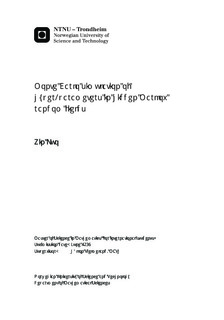Monte Carlo simulation of hyper-parameters in hidden Markov random fields
Master thesis
Permanent lenke
http://hdl.handle.net/11250/259385Utgivelsesdato
2014Metadata
Vis full innførselSamlinger
Sammendrag
Bayesian inference is an important branch in statistical sciences. The subject of this thesis is about Bayesian inference in models for a vast number of dependent objects. The fundamental scheme used for the inference in this thesis is Markov chain Monte Carlo (MCMC) methods. However, conventional MCMC approaches are not feasible for resolving issues resulting from intractable normalizing constants. Several methods, such as the single auxiliary variable method and the exchange algorithm, can avoid computer-intensive calculations of intractable normalizing constants, but they are merely applicable to the case without latent variables. Based on Markov random fields (MRFs), we propose two different strategies to overcome the difficulty as the result of noisy observations. The first strategy named simulation strategy I combines the exchange algorithm with MCMC techniques to simulate from the distribution of interest. For the second strategy called simulation strategy II, we use more auxiliary variables with block updates, and adopt partially ordered Markov models (POMMs) to approximate the proposal distributions in order to get rid of high dimensional calculations. We empirically compare these two strategies according to the diagnostics of convergence, mixing and CPU time requirements coming from our simulation examples. For the mixing assessment, we use the Effective Sample Size (ESS). Simulation strategy II using block updates can generate stationary Markov chains having better mixing within fewer number of iterations (≤ 200), and maximum ratio of ESS in simulation strategy II to ESS in simulation strategy I is 6.27. Simulation strategy I uses less CPU time per iteration irrespective of convergence to stationarity or simulations of equilibrium samples, but simulation strategy I needs more iterations (> 200), and for large absolute values of parameters it produces poor mixing compared with simulation strategy II.
